State Bird of Elsinore
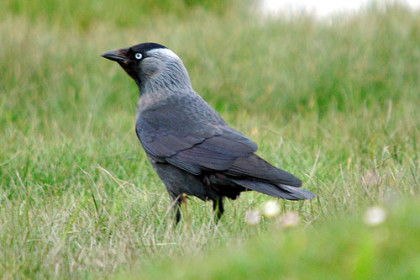
The Jackdaw
Our flight of the jackdaw brings us to a very different place now. The works of Shakespeare, and specifically Hamlet, where a character, Osric, is identified as a “chough,” an older word for a jackdaw dating back to Chaucer. The scene is quite relevent. First up is the First Folio version – Act V, sc 2 which we take up as (Osric) a courtier, enters.
Hamlet First Folio (1623)
click to enlarge
There’s quite a bit there to chew on. But I’m going to add to it, with a look at the same scene from the First Quarto (Q1) which is quite different. Osric is not called a “chough” here. In fact, he’s not even named Osric. But there is information here that is not in the FF version. We’ll glean feathers from both. This scene is (like all of Q1) considerably shorter.
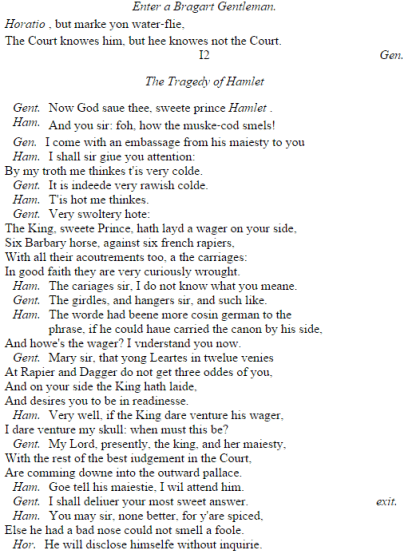
Q1 Hamlet (1603)
click to enlarge
Let’s start with the name. Like Corambis/Polonius, this character changes his name from the first Quarto. Corambis was a name easily linked to Burghley via his motto. Osric is Braggart Gentleman in Q1. That name is consistent with William Shaksper, who’s been depicted as a braggart repeatedly in references discussed in this blog. In Q1, “The court knows him, but he does not know the court.“ – Ouch! the braggart gentleman sounds like a commoner. Hamlet describes him as a “water-fly” in the FF. The name reminds us of Jonson’s later character “Fly” in The New Inn. We’ll discuss Fly more below. Hamlet tells us Horatio is lucky not to know him; “tis a vice to know him.” Hamlet’s contempt for the Braggart Gentleman/Osric is clear. “He has much land – is in possession of dirt” – how condescending! It appears Osric doesn’t have estates, simply property in a backwater region. “His crib shall stand at the King’s mess. ‘Tis a chough…” He’s a jackdaw, and he’s done his thieving at the King’s table. Or at least, the King has enabled his thieving.
Q1 has an exchange about hot and cold. The FF expands on that adding the bit about the hat. Let’s look at the Q1 exchange alone.
“Ham. By my troth me thinkes t’is very colde.
Gent. It is indeede very rawish colde.
Ham. T’is hot me thinkes.
Gent. Very swoltery hote.”
The jackdaw is a mimic. The Braggart Gentleman has no ideas of his own as we should expect. He’s simply mimicking whatever Hamlet says. If Hamlet is a poet, and the Braggart Gent is mimicking the poet, then the Braggart Gent is a Poet Ape. – more on that idea to come.
Now the business with the hat from the FF. Osric enters the scene bare-headed. Hamlet insists he don his cap. He makes a point of it. Have we seen this before? Yes – in As You Like It. Here’s earlier Festival Robe commentary.
________________________________________
“…Touchstone’s initial greeting to William.
“TOUCHSTONE Good even, gentle friend. Cover thy head, cover thy
head; nay prithee, be covered. How old are you friend?”
Act V sc i
Shakespeare drives the point home three times. William is a servant.”
______________________________________
This blog has noted time and again the instances of the bare-headed servant in the literature. And we’ve connected that to the prominent bare head in the First Folio engraving. To help understand the role of hats in Tudor society, here’s Lawrence Stone in “The Crisis of the Aristocracy;”
Why does Hamlet/Touchstone insist on Osric/William putting on his hat? The act is forcing Osric/William to elevate his status to more of an equal to Hamlet/Touchstone.
The hypothesis of The Festival Robe is that William Shaksper was once in service to Vere. I suspect that like Miles Metaphor (Jack-a-Lent, the Judas in A Tale of a Tub) discussed in the previous entry, Shaksper betrayed his master upon leaving service. That betrayal made him a gentleman and made him rich. In these scenes, the now-gentleman Osric/William has returned to face the man he betrayed. He presents himself as he always did – hatless – in servitude. By requiring Osric/William to don his hat, Hamlet/Touchstone forces Osric/William to own his betrayal. It is a bitter and stinging rebuke. For Oxfordians, it’s very good theater. For Stratfordians, it’s just another dumb show.
Q1 has a discussion of perfume, the Braggart Gentleman has a strong scent. “How the muske-cod smells,” says Hamlet. When the Braggart Gent departs with Hamlet’s message for the King, there’s this exchange.
Gent. I will deliver your most sweet answer.
Ham. You may sir, none better. for y’are spiced.
Else he had a bad nose could not smell a fool.
I believe this exchange, where the Braggart Gent will deliver Hamlet’s message, complete with his sweet, spiced smell is parodied in Dekker’s Satiromastix. In that play, Horace (considered by critics to be standing for Jonson) has his pupil, Asinus, and poet-ape in training deliver a message to other poets. Remember we also encountered an Asinus, one of the players who informed for the state in Jonson’s Poetaster, here. Note the descriptions of Asinus as a mimic. And also note he’s a “rooke,” there’s the crow again! And then there is the reference to the message to be delivered, it’s “a sweet, muske-cod a pure spiced gull…” And notice too that Asinus is diminutive – like our petite Jack from Dodypoll.
Dekker’s Satiromastix (1601)
click to enlarge
I think it’s fair to say we can date Q1 of Hamlet to before Satiromastix. Remember too, from The Devil is an Ass – the items that De-Vile stole from Ambler, included not just his pen and ink and books, but his “Civet” also, which was perfume.
What I’ve established in these posts, is a chain of depictions of the jackdaw as both representations of Shaksper and of Poet Apes in literature after Groatsworth and its Shake-scene invocation. Shakespeare scholarship has spent quite a bit of time taking apart Groatsworth and its upstart crow. They’ve also spent quite a bit of time taking apart Hamlet. It is extraordinary that if you search the compiled academic archives over at Jstor for a publication or scholarly paper that references both “Groatsworth” and “chough” the very type of bird upon which the fable Groatsworth alludes to, that search returns ZERO entries. Not a single Shakespeare scholar, at least in publications compiled by Jstor, has investigated this obvious relationship. The next time some tourist industry mouthpiece tells you that the PhDs have all the answers, you can gently remind them that these PhDs aren’t even asking the correct questions.
That Hamlet has a prior history with the Braggart Gent/Osric is clear, along with his contempt for the man. But it should also be stressed what the Braggart Gent/Osric’s position is now. He’s delivering a message on behalf of the King. He’s working for the state. Indeed, being a “beast who is a Lord of beasts,” Osric’s “crib shall stand at the King’s mess” Hamlet tells us. This chough is a state bird, the state bird of Elsinore.
In Jonson’s The New Inn, where “All the world’s a play” and the inn is hosted by a disguised nobleman, his sidekick and manager of the down stair’s Fly, is a “state bird.” The Revels edition of The New Inn glosses ‘state bird’ as ‘politician.’ AEsop the player in Poetaster, who was an informant was also described as a politician in that text. Rambler has speculated on Shaksper as informant, and I’ve expanded on that theme previously here.
Below are some of the bird references to Fly from The New Inn. I’ll have another post in due course concerning Fly’s responsibilities at the inn, and whether they inform us on just what Shaksper’s theatrical duties were.
Jonson The New Inn (1631)
Recent internet discussion of Groatsworth has brought out those with strong partisan beliefs that the upstart crow points to Edward Alleyn. I side with Rambler here, that his assertion of multiple authors of Groatsworth is correct. The crow/shake-scene/Johannes passage is not related to the evidence that points to Alleyn. Oxfordians would do well to read Rambler’s take in these three posts from April 8, April 9, and April 10, 2014. Rambler also lays the foundation for Jack Daw as a bird allusion. I have only expanded on that. My emphasis is that the jackdaw’s natural traits of thievery and mimicry make it the natural allusion for poet apes. There is no similar context for an actor-ape. Actors aren’t stealing author’s works, they are given it. The Alleynites never seem to explain that fatal flaw in their reasoning. I’ve attempted to show that the jackdaw was repeatedly used as an allusion to Shaksper as well as “Jack” as a “Shaksper word” in much the same way “candlelight” is a “Vere word” in the period’s literature.
The icing on the cake is the great author’s use of chough to describe the mimicking and thieving Braggart Gent/Osric in Hamlet. That mention is then combined with his re-use of the hat-donning motif from As You Like It, a scene already accepted by Oxfordians as an allusion to the difficult relationship between the great author and Will Shaksper. Finally, we see Dekker parodying that very scene from Hamlet as both utilize the sweet, spiced, muske-cod scent to deliver messages., Dekker’s use of a Poet Ape, mimic, and rook (crow) to deliver his scented message fortifies our argument further still.
_________________________________
“Wanda. …you think you’re an intellectual. Don’t you, Ape?
Otto. Ape’s don’t read philosophy.
Wanda. Yes they do. They just don’t understand it.”
A Fish Called Wanda
_________________________________
Cornish Chough
A comment in the previous post asked about the mention of a ‘russet-pated chough’ by Puck in Midsummer Night’s Dream as a reference to a Cornish chough, with the russet-pate possibly alluding to the tawny color of the Vere livery. As the picture above shows, the Cornish chough does not have a russet pate, the bird is all black with a red bill and red legs. The OED defines russet as, when applied to various fruits, “brownish or greyish cast.” The “greyish” meaning for russet appears to have been lost over time. Based on the picture of the jackdaw, with its greyish head at the top of the page, I’m convinced that Shakespeare’s use of the word is meant as the jackdaw, not the Cornish chough.

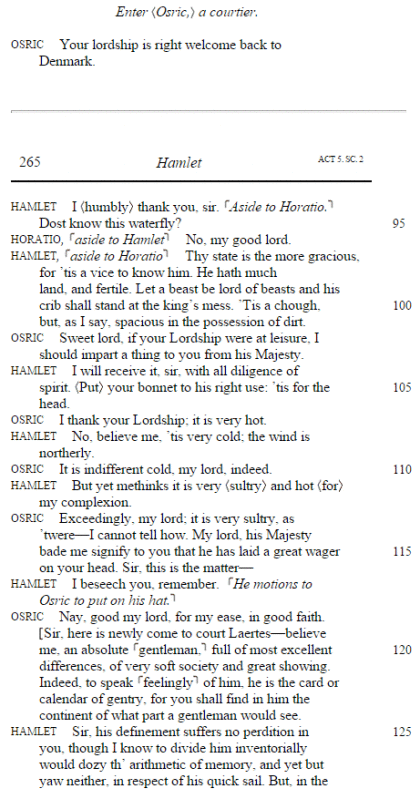
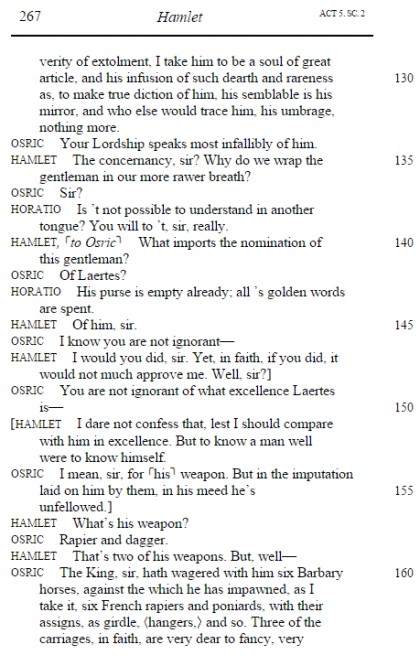

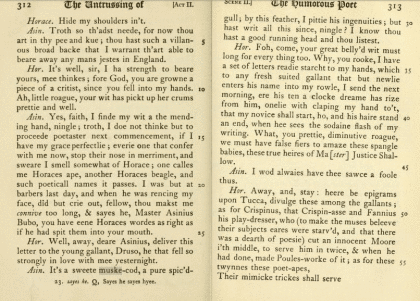
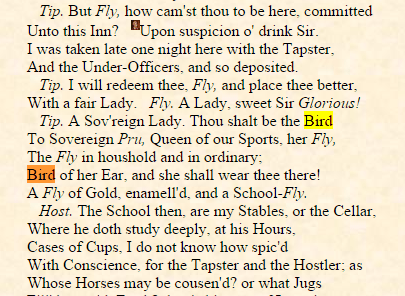
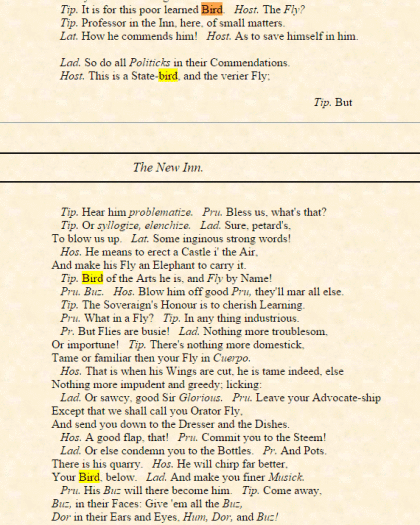
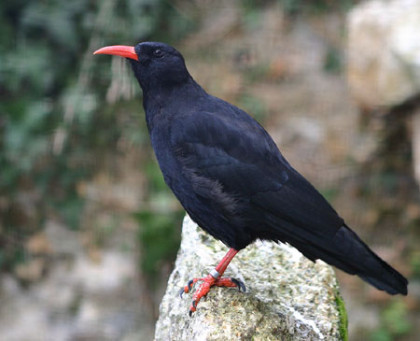

2 comments
“publications compiled by Jstor”
Just as a caution, Jstor is extremely incomplete in its listings.
“Shaksper betrayed his master upon leaving service.”
How do you mean, “betrayed”? Do you mean identified him as the author to hostile parties? What is the evidence for this?
In general, though, very interesting blog. Thanks.
“Actors aren’t stealing author’s works, they are given it. The Alleynites never seem to explain that fatal flaw in their reasoning.”
I think your announcement of the “fatal flaw” is a bit premature. Alleyn was a playwright as well as an actor-manager. You might want to tone down the rhetoric a notch and admit that the topic is still under vigorous discussion. Putting an incorrect assumption (Alleyn being an actor and *not* a playwright) in place of dealing with the richness of the evidence supporting the Alleyn reading is a shortcut that doesn’t hold up well over time. Just sayin…..
Leave a Comment